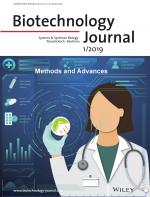Tackling Humidity with Designer Ionic Liquid-Based Gas Sensing Soft Materials
- Citation:
- Esteves, C, Palma SICJ, Costa HMA, Alves C, Santos GMC, Ramou E, Carvalho AL, Alves V, Roque ACA. 2022. Tackling Humidity with Designer Ionic Liquid-Based Gas Sensing Soft Materials, dec. Advanced Materials. 34:2107205., Number 8: John Wiley & Sons, Ltd
Abstract:
Relative humidity is simultaneously a sensing target and a contaminant in gas and volatile organic compound (VOC) sensing systems, where strategies to control humidity interference are required. An unmet challenge is the creation of gas-sensitive materials where the response to humidity is controlled by the material itself. Here, humidity effects are controlled through the design of gelatin formulations in ionic liquids without and with liquid crystals as electrical and optical sensors, respectively. In this design, the anions [DCA]− and [Cl]− of room temperature ionic liquids from the 1-butyl-3-methylimidazolium family tailor the response to humidity and, subsequently, sensing of VOCs in dry and humid conditions. Due to the combined effect of the materials formulations and sensing mechanisms, changing the anion from [DCA]− to the much more hygroscopic [Cl]−, leads to stronger electrical responses and much weaker optical responses to humidity. Thus, either humidity sensors or humidity-tolerant VOC sensors that do not require sample preconditioning or signal processing to correct humidity impact are obtained. With the wide spread of 3D- and 4D-printing and intelligent devices, the monitoring and tuning of humidity in sustainable biobased materials offers excellent opportunities in e-nose sensing arrays and wearable devices compatible with operation at room conditions.
Notes:
n/a







